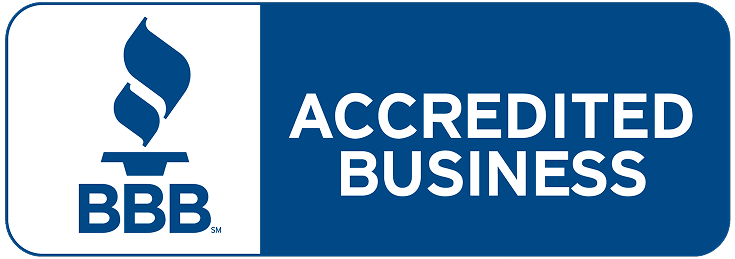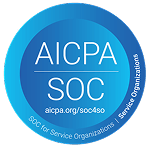The timeline for Indian students: From loan approval to tuition payment in the U.S.
Studying at a U.S. university is a dream for many Indian students. India became the leading place of origin for international students in the 2023-2024 school year, with 331,602 Indian students pursuing their degree in the U.S.
To turn that dream into a reality, you may need a student loan to pay for tuition and fees. Securing a student education loan can take a few weeks or months, so applying early is key for paying your tuition on time.
Starting the process several months before your tuition bill is due will ensure your funds come through in time.
How to get a student loan for Indian students in the U.S.: Step by step
Here’s the full timeline for getting a student loan for Indian students in the U.S., from your initial application to approval to loan disbursement. Learn how to navigate each step so you can manage your time efficiently and not miss any critical deadlines.
Learn more
Step 1: Estimate costs
If you’re applying for the fall semester (which typically begins in August or September and is the most common start date), you should receive your admissions decision in the spring or earlier. At this point, you can start estimating your cost of attendance.
Besides tuition and fees, costs you may need to cover include:
-
- Housing, such as a dorm or off-campus apartment
- Food, whether a dining hall plan or groceries
- Books and supplies, such as a laptop
- Transportation and travel
- Other living expenses, such as a cell phone and clothing
Most universities have an estimated cost of attendance on the financial aid section of their websites, but you can adjust the figures to match your lifestyle. Cost may be a key factor when choosing a university.
Step 2: Review your financing options
After you’ve crunched the cost-of-attendance numbers, it’s time to review your financing options. The most affordable payment methods will come from your savings, grants and scholarships.
If you need additional funding, student loans for study abroad could come in handy. As an Indian student, you won’t qualify for federal student loans from the U.S. Department of Education.
However, you can borrow from a private lender, such as a bank or online lender. Some private lenders in the U.S. require you to apply with a cosigner who’s a U.S. citizen or permanent resident.
Good news, MPOWER Financing offers student loans to international students without requiring a cosigner or collateral. Interest rates are fixed and inflation-proof, too, so you don’t have to worry about your payments and borrowing costs increasing over time.
Step 3: Apply for an international student loan
Your next step is to apply for an international student loan. You can apply any time for a private student loan, but you’ll want to get started at least a month before your tuition is due to ensure the funds arrive on time.
For example, if you’ve picked a university by May 1, you could apply for your student loan in May or June. MPOWER Financing lets you apply as early as 12 months before the start of your semester.
You also don’t need your student visa to begin your loan application with MPOWER. However, you will need to provide your visa before securing final loan approval.
It usually takes a few weeks to get your visa, and you can apply for it once you receive your I-20 form from your university. MPOWER provides a free support letter which helps you obtain your I-20 from one of hundreds of universities across the U.S. and Canada.
Step 4: Await student education loan approval
After you’ve submitted your application, you’ll wait for the lender to approve and process your loan. During this time, the lender may ask you to submit additional documentation.
Keep an eye out for any requests from the lender so you can submit these documents promptly. Staying on top of requirements will help the loan process go quickly and smoothly.
The lender may also need to verify your enrollment with your school and certify its official cost of attendance.
Step 5: Loan disbursement and paying your tuition
The final step in the student education loan process is disbursement. Most lenders will send your loan proceeds directly to your university.
The university’s financial aid office will apply the loan to tuition and fees. Then, it will send you any leftover amount for education-related living expenses, such as room, board and supplies.
If you wish to receive funds for living expenses as a direct deposit, you’ll need to open a bank account in the U.S. and provide your account information to the bursar’s office.
Getting an international student loan: Tips for managing your time
The student loan timeline for Indian students in the U.S. varies by lender. MPOWER Financing can perform a final review of your application in three to five business days. The overall length of time also depends on other factors such as document submission.
To avoid a time crunch, start applying for your loan soon after you receive your admission decision and choose a school. For fall intake, this will likely be in April or May. If you’re starting in the spring semester, this may be in October or November.
Here are a few other tips for managing your time efficiently:
-
- Create a loan application checklist: Write down everything you need to apply for a loan, such as proof of enrollment, a copy of your passport and anything else the lender requires. MPOWER has a checklist for graduate students that you can use.
- Write down important deadlines: Find out and record key deadlines, such as when a school requires your enrollment decision and when your tuition bill is due.
- Use a calendar or planner: Whether you prefer an online calendar or paper planner, a scheduling tool will help you keep track of all these moving parts.
- Stay in contact with your lender: Respond quickly to requests for additional documents to avoid delaying the loan approval process.
MPOWER has helped thousands of Indian and other international students earn their degrees in the U.S. and Canada with study abroad loans. It offers a quick, easy online application process and loans up to US$100,000 with no cosigner or collateral required.
When you get a loan with MPOWER Financing, you’ll also get access to a free visa support letter and visa prep course. Plus, you may qualify for a free credit card and bank account to simplify managing your money in the U.S.
Attending university in the U.S. can be an exciting venture, but it’s also challenging, especially when you’re figuring out your finances. By starting the loan process early, you can reduce stress, compare your options with confidence and make sure your tuition is paid on time.
FAQ
How long does it take to get student loan money once approved?
The timeline to get student loan money once approved varies. Some lenders can disburse loans in a few days, while others might take a few weeks. Most lenders send student loan money directly to the school, so you’ll need to wait for your school to apply your loan to tuition and fees before you’ll receive the leftover amount for living expenses.
How long does it take to get a tuition loan?
It can take a few weeks or months to get a tuition loan. The timing depends on your lender, your school and how promptly you provide required documentation during the loan application process.

